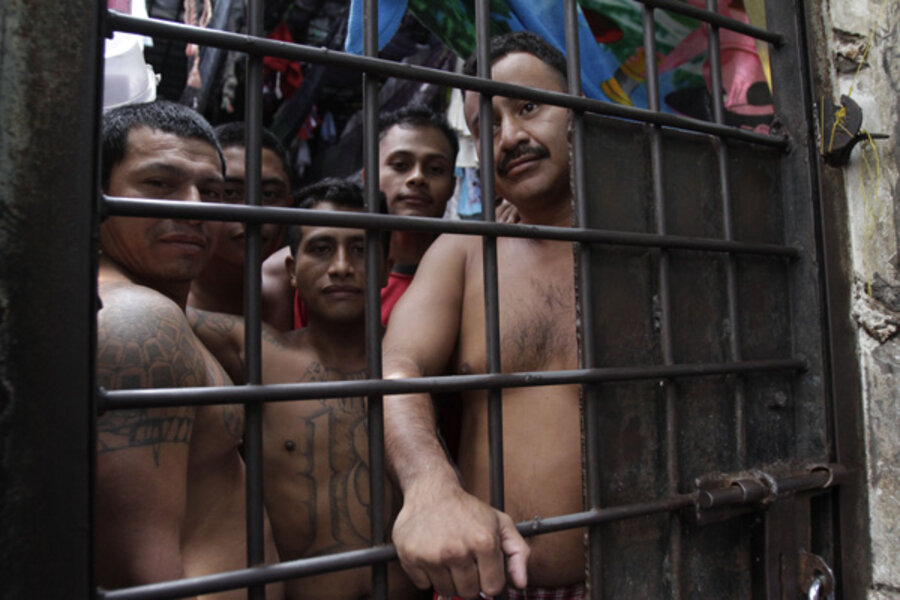El Salvador: Historic gang truce brings mixed results
Loading...
• A version of this post ran on the author's blog, centralamericanpolitics.blogspot.com. The views expressed are the author's own.
Marcos Aleman of the Associated Press has a story making the rounds on the horrific killing of five schoolboys in Santa Tecla, El Salvador. The boys were found in an unmarked grave three weeks after having disappeared. Authorities speculate that the boys were killed after having rejected an "offer" to join the MS-13.
Six months after El Salvador brokered an historic truce between two rival gangs to curb the nation's daunting homicide rate, officials are split over whether the truce actually works. In March, MS-13 and its rival, Barrio 18, vowed to end the killings and the forced recruitments in exchange for better conditions for incarcerated gang leaders, who run their operations from behind bars. The government transferred 30 bosses of each gang from the maximum security Zacatecoluca prison, nicknamed "Zacatraz," to ordinary jails, where they would impart orders to their minions on the street, purportedly to stick with the truce.
Murders, disappearances, extortion, and robberies by gangs continue in El Salvador. There's no doubt about that. What's unfortunate is that at six months into the truce, people can't even agree if the numbers have improved or remained unchanged. While the government supports figures that show a decrease in each category, some outside analysts are unconvinced and say that the truce is simply a farce with gangs adopting new approaches, including making more frequent use of disappearances.
RELATED: Think you know Latin America? Take our geography quiz!
The other question that needs to be answered is who is violating the truce. Analysts in the AP story linked to above say that the truce have strengthened the gangs who continue to operate from prison. It's important to know if the imprisoned gang leaders who negotiated the truce are violating it in spirit and practice or whether it is gang members living on the streets who didn't receive anything in return for the truce who are continuing their criminal enterprises. It makes more sense if gang members on the streets are doing the killing because they haven't accepted what the imprisoned leaders agreed to but I've read some conflicting stories about this.
I still think that the goal should be to use the truce to get as many "kids" out of gangs as possible and to put in place smarter approaches to gang prevention, intervention, and suppression strategies. It isn't reasonable to expect all fifty thousand or so gang members to give up the gang life.
– Mike Allison is an associate professor in the Political Science Department and a member of the Latin American and Women's Studies Department at the University of Scranton in Pennsylvania. You can follow his Central American Politics blog here.







